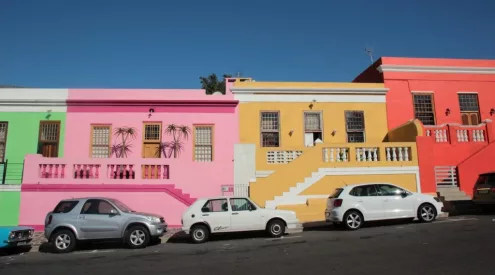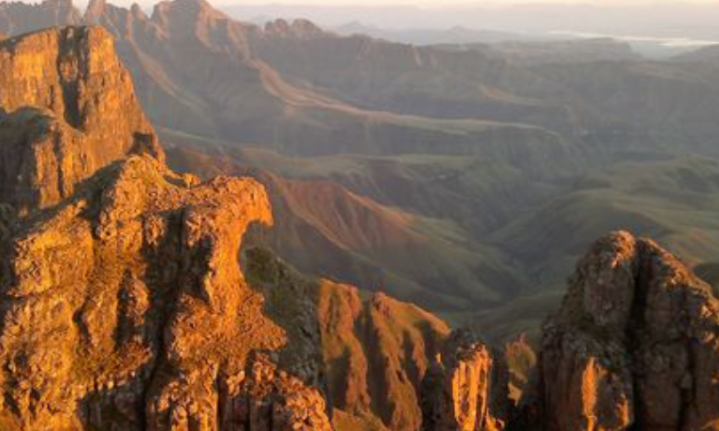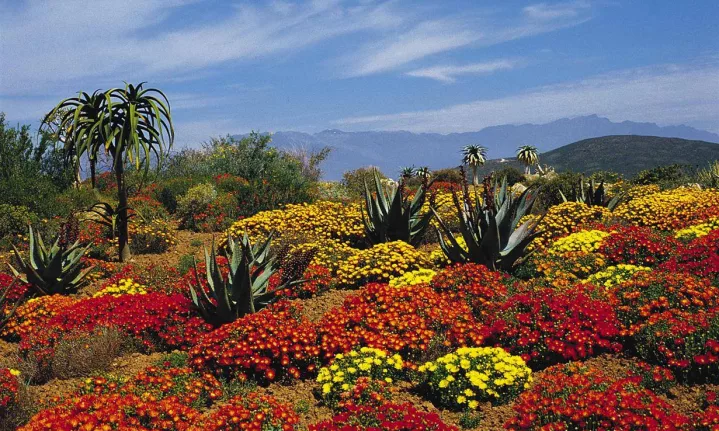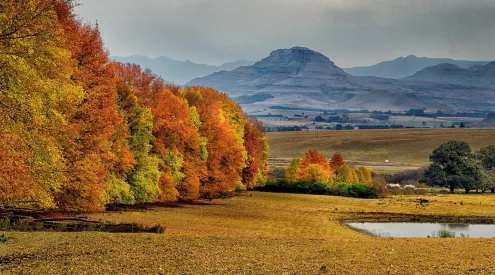South Africa added two UNESCO World Heritage Sites in 2024, enriching its global heritage. These sites demonstrate the country’s rich history and culture, showcasing human behavior’s evolution and its landscapes’ influence. As we update South Africa’s World Heritage Sites list, these locations reveal modern societies’ origins and their environmental relationships. Discover how these sites stand out and contribute to South Africa’s esteemed heritage.
1. Fossil Hominid Sites of South Africa
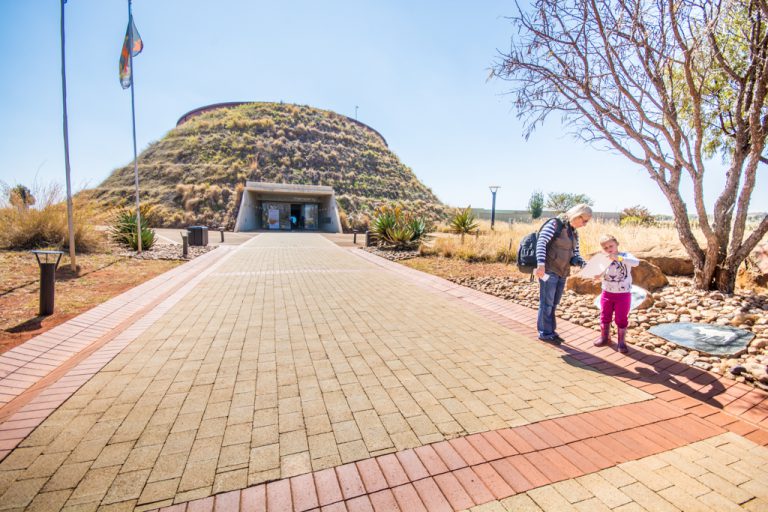
Picture: Melanie van Zyl
The Fossil Hominid Sites of South Africa, northwest of Johannesburg, earned recognition for contributing to our understanding of human evolution. This 47,000-hectare area, called the Cradle of Humankind, features limestone caves and other locations preserving early hominid evidence.
The Sterkfontein Caves produced the famous 2.3-million-year-old “Mrs. Ples” fossil, offering insights into human origins. In 1924, researchers discovered the “Taung Child” at the Taung Skull Fossil Site, highlighting the region’s importance. The Makapan Valley, part of this heritage site, contains fossils of early species dating back 4.5 million years. These sites’ unique natural settings have preserved a vast reserve of remains, making them a treasure trove of scientific data on early human history.
2. Robben Island
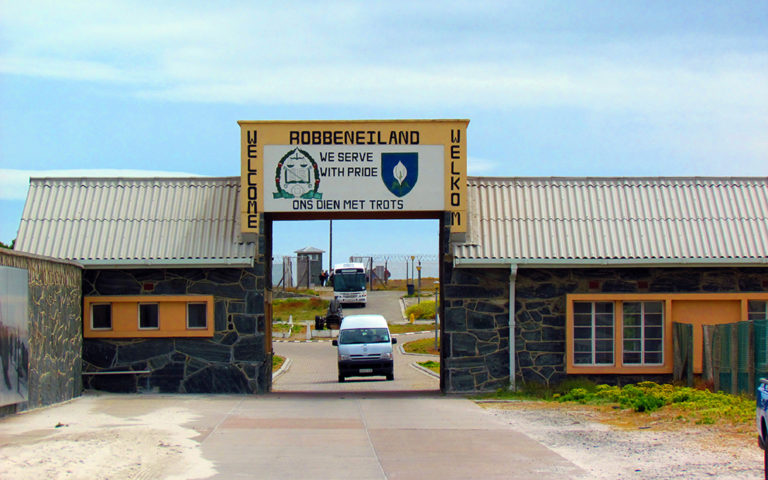
Picture: Getaway Gallery
Robben Island, off Cape Town’s coast, carries profound historical significance, earning a UNESCO World Heritage designation in 1999. Over centuries, the island served as a leper colony, military base, and high-security prison. It is most renowned as a notorious Apartheid-era maximum-security prison for political detainees.
Nelson Mandela, imprisoned there for 18 years, became a global symbol of the struggle against oppression. The island’s late 20th-century buildings symbolize resilience and democracy’s triumph over racial injustice. Today, Robben Island stands as a monument to human perseverance and the victory of democratic ideals over tyranny.
Also read: UNESCO World Heritage Sites to visit in Africa
3. iSimangaliso Wetland Park
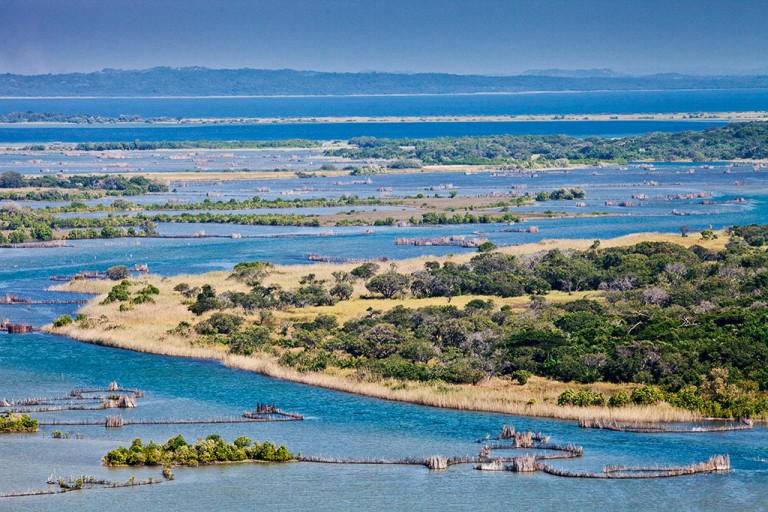
iSimangaliso Wetland Park, along KwaZulu-Natal’s coastline, is a natural marvel with diverse ecosystems, earning its UNESCO World Heritage status. Covering 239,566 hectares, the park is renowned for its stunning landscapes, including coral reefs, sandy beaches, and diverse wetland environments. The park’s geographical diversity, from coastal dunes to reed and papyrus wetlands, supports a wide range of species, including water birds, nesting sea turtles, and migratory whales and dolphins.
The park’s exceptional beauty lies in the contrast between the Indian Ocean’s clear waters and its untouched beaches. The dynamic environment, including Lake St. Lucia’s shifting salinity and turtle nesting, highlights its ecological importance. iSimangaliso’s location, where tropical and subtropical climates meet, fosters extraordinary biodiversity and supports ongoing evolutionary processes. This combination of scenic beauty, ecological diversity, and natural phenomena underscores iSimangaliso Wetland Park’s global importance as a UNESCO World Heritage Site.
4. Maloti-Drakensberg Park*
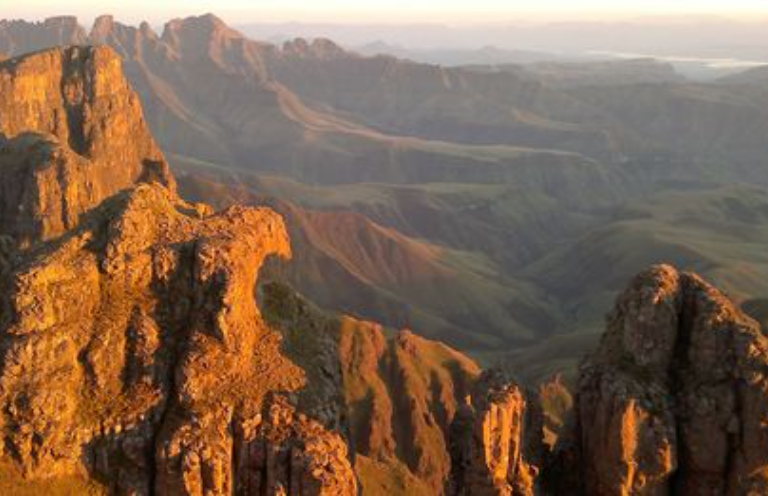
Source: Facebook / @Maloti-Drakensberg Mountains
The Maloti-Drakensberg Park, shared by South Africa and Lesotho, is renowned for its stunning landscapes and cultural significance. Spanning 249,313 hectares, it features dramatic basalt cliffs, sandstone ramparts, and sweeping grasslands. The park is celebrated for its rock art, with around 690 sites displaying over 35,000 images that reveal the San people’s spiritual practices.
Its natural beauty is equally striking, with rugged escarpments and pristine river valleys creating a spectacular visual experience. The park’s diverse ecosystems, from alpine plateaux to high-altitude wetlands, host endemic and threatened species, including over 250 plant species and rare birds. The area’s rich biodiversity and unique geological features underscore its importance, making it a crucial sanctuary for natural and cultural heritage. The Maloti-Drakensberg Park’s UNESCO World Heritage status highlights its exceptional aesthetic and ecological value, preserving a vital part of our global heritage.
5. Mapungubwe Cultural Landscape

Thulamela Ruins.
The Mapungubwe Cultural Landscape, spanning South Africa, Zimbabwe, and Botswana, showcases one of Southern Africa’s most influential ancient civilizations. This expansive savannah, where the Limpopo and Shashe rivers converge, was the Kingdom of Mapungubwe’s vibrant center, flourishing between 900 and 1300. At its peak, Mapungubwe was a major trading hub connected to India and China, renowned for gold and ivory production.
The archaeological remnants of palaces and settlements offer unparalleled insight into the kingdom’s social and political structures. These ruins depict the kingdom’s rise and fall, influenced by climate change’s adverse effects on agriculture. The site’s preservation provides a unique record of cultural evolution and environmental impact, highlighting its historical importance. This rich heritage makes the Mapungubwe Cultural Landscape a distinguished UNESCO World Heritage Site.
6. Cape Floral Region Protected Areas
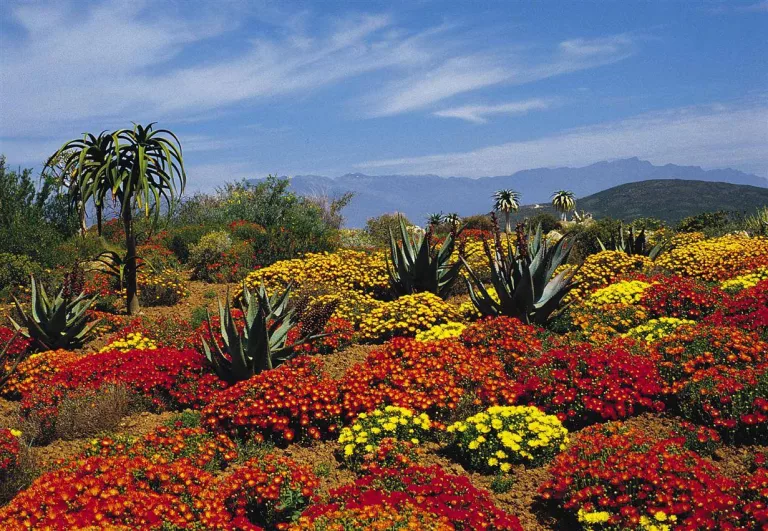
Site: Facebook / Iziko Museums of South Africa
The Cape Floral Region Protected Areas, at South Africa’s southern tip, showcases an extraordinary array of plant life and ecological processes. Despite its small size, nearly 20% of Africa’s plant species thrive here, with about 69% unique to the area. The fynbos vegetation, adapted to the Mediterranean climate and frequent fires, supports a complex ecosystem with high levels of plant-pollinator interactions.
This protected area is a hotspot for plant endemism, with many species found nowhere else. The region’s outstanding biodiversity and unique evolutionary processes highlight its global significance. The Cape Floral Region’s distinctive flora and its role in ongoing ecological developments led to its recognition as a UNESCO World Heritage Site.
7. Vredefort Dome
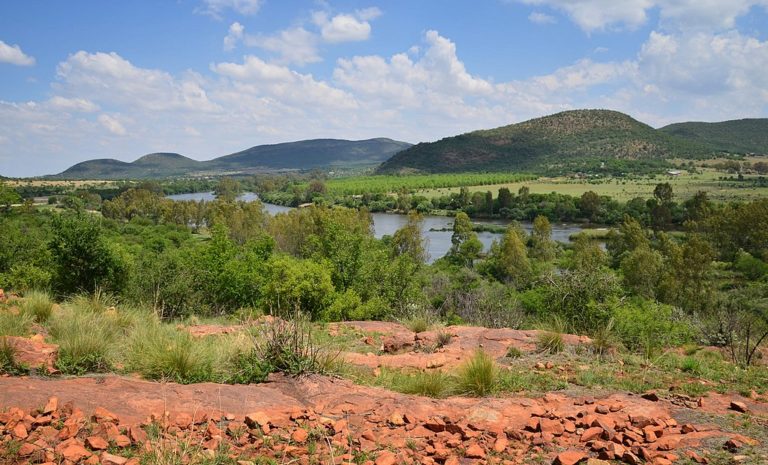
Picture: Getaway Gallery
Located about 120 km southwest of Johannesburg, the Vredefort Dome captures a pivotal moment in Earth’s history. Formed by a meteorite collision 2 billion years ago, it is the largest and oldest impact structure ever discovered. With a radius of 190 km, it marks the most significant single energy release event recorded on Earth.
Despite extensive erosion, Vredefort Dome remains invaluable for studying meteorite impacts. Its well-preserved geological strata offer a rare and complete profile of an ancient astrobleme, providing insights into early geological processes and evolutionary changes. This remarkable structure reveals the full depth of impact dynamics and plays a crucial role in Earth’s geological history.
Also read: UNESCO confirms 11 new biosphere reserves in 11 countries
8. Richtersveld Cultural and Botanical Landscape
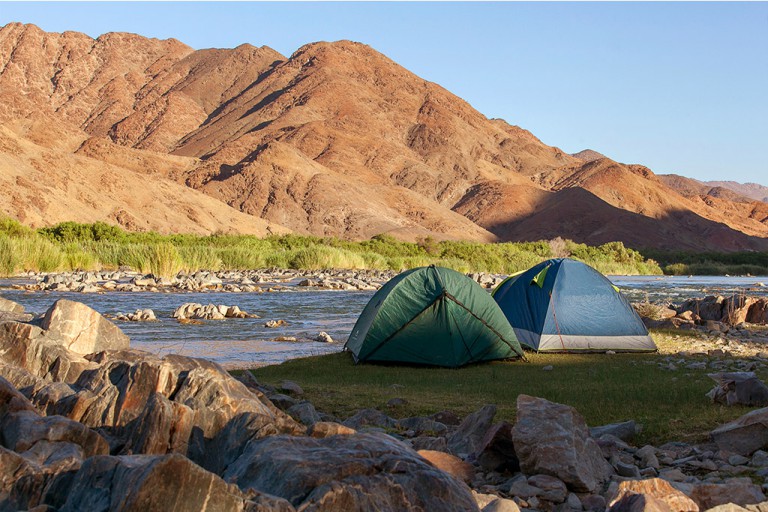
Camping here with the Orange River on your doorstep is incomparable.
The Richtersveld Cultural and Botanical Landscape shows how ancient practices have shaped both culture and environment. For two millennia, the semi-nomadic Nama people have adapted to the harsh terrain through seasonal transhumance pastoralism, moving herds between grazing areas. This practice has shaped the landscape and preserved its unique biodiversity.
The area’s dramatic scenery, including flat plains, volcanic rocks, and rugged mountains, reflects the Nama’s harmonious interaction with nature. Their sustainable land management has protected the succulent Karoo vegetation and embodies a longstanding way of life. Today, the Richtersveld stands as a living monument to these traditions, offering insight into a pastoral culture that continues to enrich the landscape.
9. ǂKhomani Cultural Landscape

Taking a walk at the Erin Game farm with Patat Van Wyk and Oushe Raad. We got to talk about how they juggle negotiating the modern world as well as holding on tot he ancient traditions of the Khomani san.
The ǂKhomani Cultural Landscape provides a profound insight into the ancient lifestyles of South Africa’s earliest inhabitants. Spanning the Kgalagadi Transfrontier Park, this region has been shaped by the hunter-gatherer traditions of the ǂKhomani people over the past 20,000 years. Their deep-rooted knowledge of the desert environment, including expert use of local plants and strategies for surviving harsh conditions, highlights their remarkable adaptation to one of the world’s most challenging climates.
The landscape not only reveals their sophisticated techniques for managing scarce resources but also preserves their rich cultural heritage. The ongoing preservation and documentation of their linguistic and ethnobotanical knowledge ensure that these ancient traditions continue to be recognized and valued. This cultural landscape stands as a living testament to the ǂKhomani’s enduring connection to their ancestral land, showcasing their profound understanding of the natural world and their resilience in the face of adversity.
10. Barberton Makhonjwa Mountains
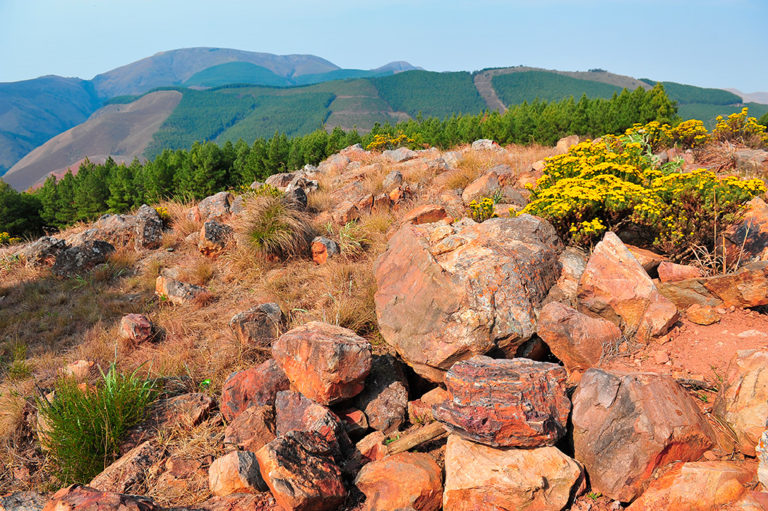
The 37km-long Barberton
Makhonjwa Geotrail forms part of Mpumalanga’s Genesis Route.
The Barberton Makhonjwa Mountains in northeastern South Africa are a geological marvel offering a rare glimpse into Earth’s ancient past. With rock formations dating back 3.6 to 3.25 billion years, these mountains provide one of the world’s oldest records of early Earth.
The exposed volcanic and sedimentary layers reveal details about Earth’s early atmosphere, meteorite impacts, and continental formation. This site is key for studying the Earth’s crust development and early life environments. Its preservation and accessibility make it a valuable resource for understanding our planet’s formative processes, securing its place as a UNESCO World Heritage Site.
11. Human Rights, Liberation and Reconciliation: Nelson Mandela Legacy Sites
In 2024, a new UNESCO World Heritage Site honors South Africa’s struggle for human rights, liberation, and reconciliation. This site includes fourteen key locations across the country, pivotal in its 20th-century political journey. Among them are the Union Buildings in Pretoria, the official seat of government, and the Sharpeville Sites, which memorialize the tragic massacre of 69 protesters against Pass Laws.
The Great Place at Mqhekezweni, where Nelson Mandela spent part of his youth, symbolizes traditional leadership. These sites highlight critical moments in the fight against apartheid, Mandela’s role in fostering understanding, and the philosophies of non-racialism, Pan-Africanism, and ubuntu, showcasing humanity’s interconnectedness.
12. The Emergence of Modern Human Behaviour: The Pleistocene Occupation Sites of South Africa
In 2024, South Africa’s UNESCO World Heritage Sites list grew to include locations that shed light on early human behavior. Diepkloof Rock Shelter, Pinnacle Point Site Complex, and Sibhudu Cave offer insights into early humans who lived here up to 162,000 years ago.
These sites provide comprehensive records of prehistoric life, showcasing early technological advancements and symbolic practices. Evidence like intricate tools, ochre processing, and decorated artifacts reveals the cognitive and cultural development of early humans. Their UNESCO inclusion highlights their global significance in understanding modern human behavior and adaptation to changing climates.
Follow us on social media for more travel news, inspiration, and guides. You can also tag us to be featured.
TikTok | Instagram | Facebook | Twitter
ALSO READ: Western Cape sites up for World Heritage status







